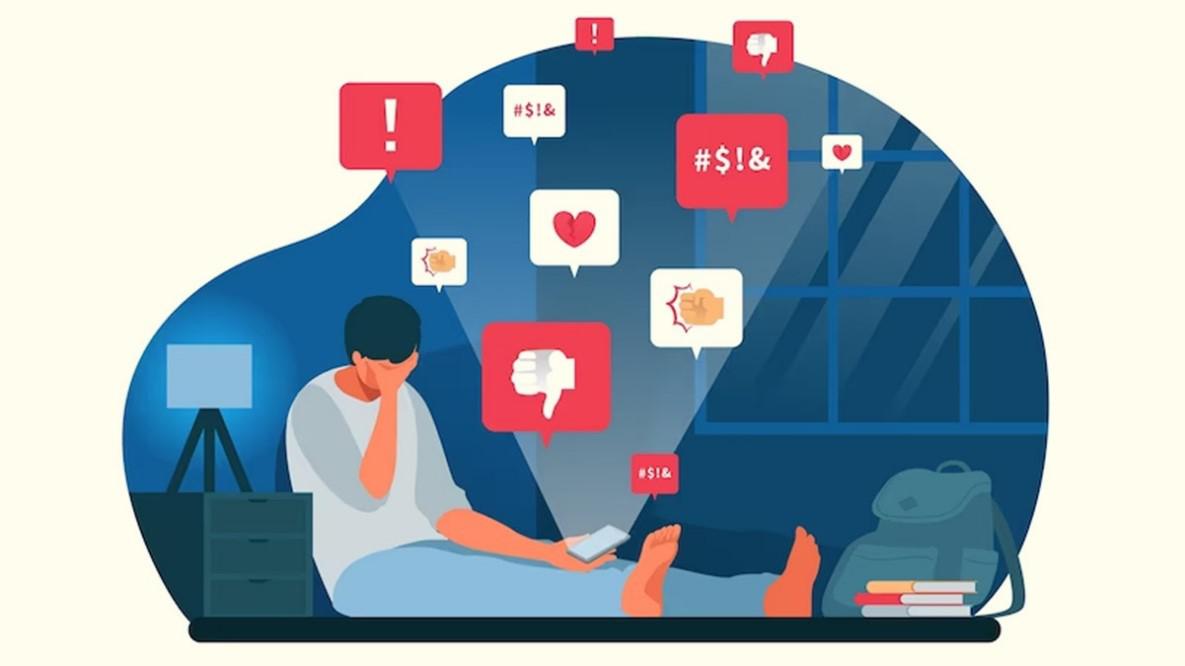
Mental health disorders suffer from inadequate representation on social media and television shows. The stigma surrounding these conditions has transformed into a form of romanticization. Instead of shedding light on the genuine hard-ships individuals face, the media distorts mental illness into an unrealistic spectacle for entertainment.
While some argue that social media raises awareness about mental health, in many instances, the way it depicts these issues has devolved into a harmful fad. Instagram, for instance, hosts visually appealing posts that glamorize mental health struggles, thereby trivializing the actual challenges people undergo. Similarly, TikTok features shallow comments that oversimplify the complexities of mental health problems.
One concerning trend involves jokes circulating on social media platforms, implying that those without traumatic experiences are mundane. These jests not only glamorize mental illness but also belittle the struggles of individuals facing such challenges, creating an unhealthy perception of desirability and coolness.
Media and Mental Illness Stigma:
· Media contributes to stigma by using exaggerated, inaccurate, and comical portrayals of individuals with mental disorders, along with providing incorrect information about mental illness.
· Cultivation Theory: People spending more time watching television tend to adopt the worldview presented on screen, influencing how they perceive the real world
· Social Learning Theory: Television not only educates through direct experience but also through observation, shaping social conventions and behaviors, including attitudes towards individuals with psychiatric disorders.
When lacking direct interactions with individuals experiencing mental illness, people often turn to media to shape their perceptions of those affected. Regrettably, media consistently portrays those with mental disorders as violent, culpable for their condition, and exhibiting unpredictable behavior—depictions that are gross exaggerations and distortions of reality, lacking truthfulness. As a consequence, a prevailing belief has taken hold within society that individuals with psychiatric disorders are uncontrollable, hazardous, and therefore warrant fear and avoidance. Research highlights a direct correlation between the amount of time spent watching television and negative attitudes toward those with mental illness. Regular viewers tend to harbor more unfavorable opinions compared to those who consume television for shorter durations.
Representation of psychiatric disorders in the media
· Distortion of images
· Gender bias
· Distortion of images of professionals and healthcare services
· Distortion of the causes of mental disorders and their treatments
Effect of Media on Children and Adolescents
The adverse impacts of media on a child's mental development stem from factors like their immaturity (concrete thinking) and their inability to differentiate between fantasy and reality, especially when media content mirrors real-life situations. Moreover, excessive media consumption reduces the time allocated for engaging in healthier endeavors like sports, physical activities, community service, cultural interests, and spending time with family. Children who surpass their peers in television viewing encounter notable difficulties in understanding narratives, a pivotal aptitude for attaining academic achievements. (Ind Psychiatry J. 2018)
· Mass media viewing and social isolation
· Media and violence
· Effects on children of violence shown on television
Media and Gender
· Display of gender differences as reality
· Portrayal of sexual behavior in media
Media and Suicide
· Celebrity suicide
· Interviewing surviving relatives and friends
Reporting Mental Illness
Responsible, accurate, and well-balanced media coverage regarding mental illness plays a crucial role. Such reports enhance the community's comprehension of the mental illness journey by incorporating viewpoints from individuals living with mental health conditions, caregivers, and mental health professionals. Furthermore, they promote the willingness to seek assistance. Several factors warrant attention when addressing matters related to mental health and mental illness in media coverage.
1. Humanizing mental illness - Highlight the undeniable reality, widespread prevalence, and potential for effective treatment of mental illness. Showcase narratives of individuals grappling with mental health challenges who actively contribute to their communities. Stress the profound influence that mental illness exerts on not only the individuals themselves but also on their family members, friends, and caregivers.
2. Offering hope to persons with mental disorders - Illuminate success stories of effectively managed mental illnesses through interviews with individuals who have successfully recovered and their dedicated caregivers. Simultaneously, foster an understanding of the difficulties inherent in coping with prolonged mental health conditions.
3. Encouraging people with mental illness seek to help - Underscore the significance of promptly identifying and addressing mental illness. Place strong emphasis on the reality that, much like numerous other illnesses, mental health conditions are responsive to treatment. Enhance understanding of available mental health services and urge individuals facing distress to prioritize seeking help without unnecessary delay.
4. Give accurate information about psychiatric disorders - Disseminate accurate information about psychiatric disorders through credible experts as sources. Illuminate the intricacies of these disorders, underscoring their complexity. Emphasize that mental illness encompasses a diverse array of symptoms, conditions, and impacts on individuals' lives, but a majority of these conditions show improvement with appropriate treatment.
Conclusion
In conclusion, media's portrayal of mental illness has evolved into a concerning trend, glamorizing and distorting these conditions instead of offering genuine insight. While social media platforms can raise awareness, they often simplify and romanticize struggles. This media-driven stigma arises from exaggerated, inaccurate portrayals and is reinforced by theories like Cultivation and Social Learning.
The misrepresentation cultivates a skewed perception, where mental disorders are sensationalized as violent and unpredictable. Yet, responsible reporting has the potential to correct this. By showcasing real experiences, highlighting recovery stories, stressing timely help-seeking, and providing accurate information, media can reverse harmful stereotypes.
In essence, media can either perpetuate stigma or promote understanding. As consumers, we must demand accurate portrayals and support media that educates and empathizes, fostering a more informed and compassionate society.
References:
https://www.ncbi.nlm.nih.gov/pmc/articles/PMC6198586/
https://opinion.inquirer.net/160554/how-social-media-glorifies-and-romanticizes-mental-illness